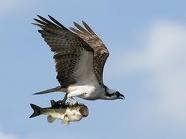Twins
Twins are two babies born on the same day to the same mother.
There are 2 type of twins, identical and fraternal (non-identical) twins.Twins are two babies born on the same day to the same mother.
Click on the link below to view formation of twins.
http://www.pennmedicine.org/encyclopedia/em_DisplayAnimation.aspx?gcid=000058&ptid=17
Click on the link below to view an interesting animation on the conception of identical twins.
http://www.pennmedicine.org/encyclopedia/em_DisplayAnimation.aspx?gcid=000033&ptid=17
Non-identical twins
Twins that are non-identical are produced from two separate eggs that are fertilised by two separate sperms. Both implant and grow in the uterus at the same time, but they are like an ordinary brother or sister; they are not genetically identical. They do not share the same placenta.
Identical twins
Identical twins form from a single fertilised egg.After fertilisation, this splits into two and an embryo forms from each of the two cells formed. Every thing about the babies is therefore identical – they have the same genes and the same patterns of gene expression; they are like two clones of the same person. They generally share the same placenta in the womb.
Non-identical twins Identical twins


















